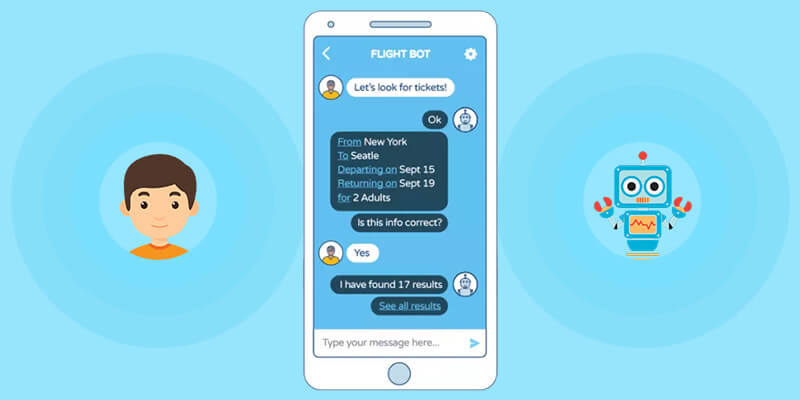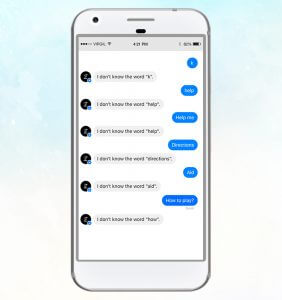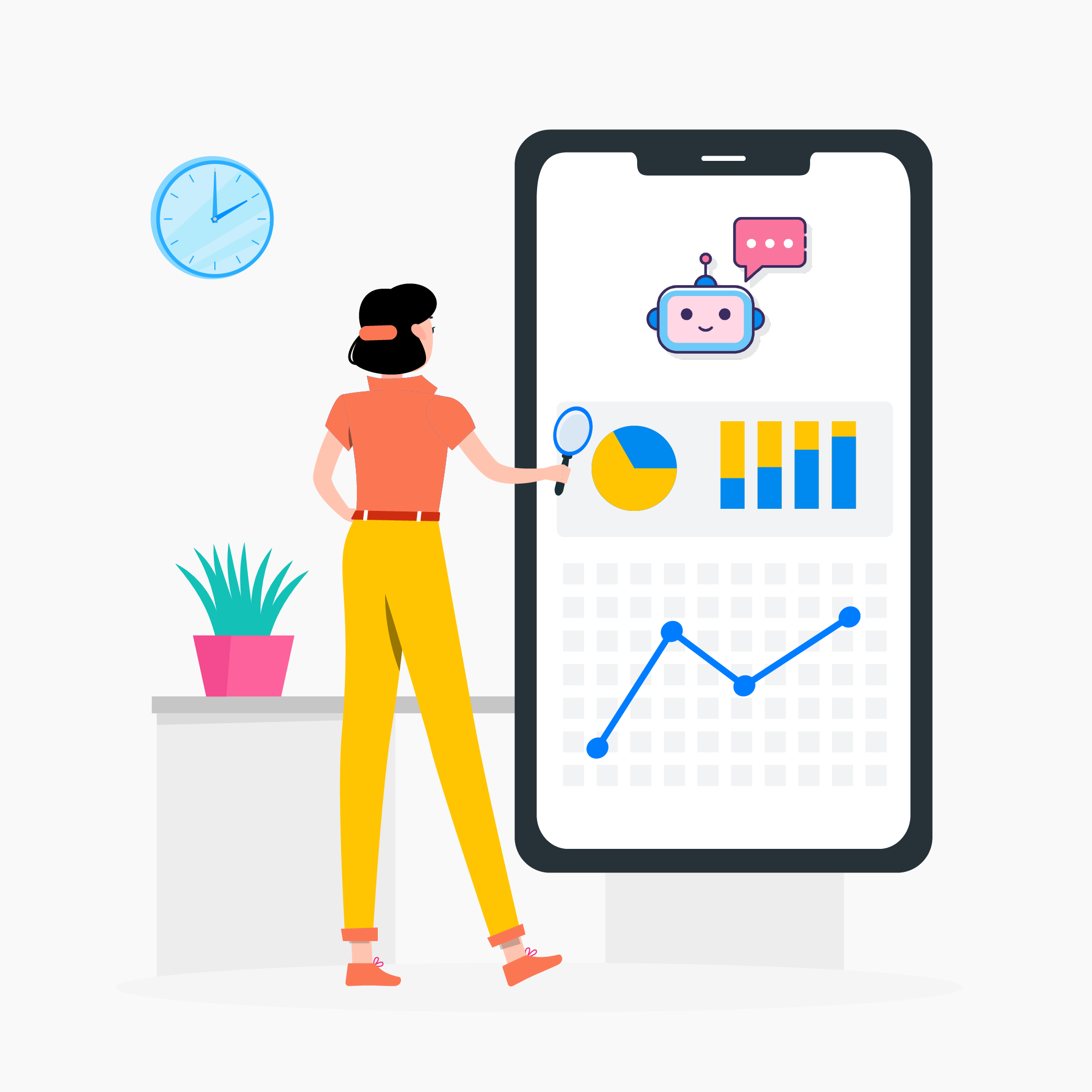- Different Measurements Metrics to Evaluate a Chatbot System
- 1. Activation rate
- 2. Average Session duration
- 3. Session per User
- 4. Voluntary User Engagement
- 5. Retention Rate
- 6. Goal Completion Rate (GCR)
- 7. Revenue growth
- 8. Confusion Rate
- 9. Human Fallback rate
- 10. Conversion sentiment
- 11. Artificial Intelligence and Machine Learning rate
Chatbots have emerged out as the new face of digital marketing; revamping the way we interact with our user base. Based on Artificial Intelligence and Machine learning, these bots are enhancing the chat conversations by offering instant replies and performing micro-tasks for humans throughout the day.
More and more companies are investing in Chatbot development to provide exceptional assistance experience to the users, and thus, take leverage of the endless possibilities. In fact, it is estimated that 80% of businesses would implement bots by 2020.
Despite of a wide range of benefits associated with building chatbot, one question hindering the businesses to invest in the technology is: “Does their job ends at building a bot? Or is there any method to determine the Chatbot’s efficiency?”
If you are also facing the same dilemma, the answer is: “Yes, you can evaluate the performance of your bot.”
Different Measurements Metrics to Evaluate a Chatbot System
Just like we have different metrics to track our app’s performance, there are various metrics to monitor the chatbot evaluation, such as:
1. Activation rate
It refers to the rate at which a user responds to a chatbot first message with a question or answer that is related to the business. In other words, it indicates the number of users who go beyond the initial acquisition and perform one or more tasks related to the bot’s goal. In the context of determining activation rate, you need to evaluate:
- The total number of users interacted with the chatbot.
- The total number of users who sent a message to the chatbot, i.e., the engaged users.
- The total number of new users sending a message to your bot.
2. Average Session duration
Average session duration is defined as the time period for which a chatbot interacted with a user and it depends on the activity performed by the chatbot. For example, a weather chatbot has the role of providing weather updates to the user, and so the session duration must be short. Whereas, a chatbot helping the users in shopping, flight booking, or telling a story should keep the users engaged for a long time. Hence, the average session duration should be longer.

3. Session per User
The number of interactions per users is yet another metric to determine chatbot’s efficiency. Again, it is related to the purpose of the bot. If your chatbot’s prime role is to answer the questions of the users and they are visiting repeatedly, it is possible that they are not getting satisfactory answers in a single interaction. On the other side, if the main purpose of your bot is to sell your products/services, several interactions might indicate that the users are interested and asking a lot many questions to know more about the product, and eventually, take the decision of purchasing it.
4. Voluntary User Engagement
This metric shows the number of times a client has engaged with the chatbot without being encouraged to do so. The higher unprompted interactions with chatbot indicates higher interest and engagement rate of users targeted.
5. Retention Rate
Retention rate refers to the rate at which users return to the chatbot over a particular time period. This, again, depends on the purpose of the chatbot. For example: If you are having a fitness chatbot, it is said to be performing efficiently only if the users return on a daily basis.
6. Goal Completion Rate (GCR)
Every business invests in chatbot development with a specific goal. Even if your chatbot is delivering a higher number of conversations, if the assigned goal is not met – the chatbot can’t be titled as performing well. In such a situation, you have to look upon the mechanism behind the bot’s working to determine how it will meet the goal associated.
7. Revenue growth
The best way to calculate the performance of a bot is to analyze the financial profit gained. It not only defines the profit gained by client conversion but also includes the amount of money saved on maintaining a customer service team throughout.
If the client is more satisfied with chatbot service and you need not turn towards human customer service team often, the bot can be considered as performing perfectly.
8. Confusion Rate
How many time your chatbot got confused and replied as “I don’t understand” also matters when it comes to chatbot’s performance. The higher the confusion rate, the lower will be the user experience, which means you need to put more efforts in training your chatbot.

9. Human Fallback rate
Similarly, the number of times your chatbot fallbacks to a human for providing customer services is also an effective performance metric. If a bot cannot handle a conversation and turns to a human too early, it indicates poor performance.
10. Conversion sentiment
Not all people jump with joy when talking to a chatbot for the first time; some act weird while some respond with both the emotions. When a user replies ‘I love you’ or ‘I hate you’ to the chatbot, it can be either be due to the inability of bot in delivering expected user experience or because they were just playing games. To conclude if your chatbot is working properly or not, you need to consider both the situations and take the action accordingly.
11. Artificial Intelligence and Machine Learning rate
How to evaluate chatbot performance? An answer to this question can be used as a performance metrics for your chatbot. A chatbot with higher AI (artificial intelligence) and machine learning rate will be able to provide better services to the users, can increase the engagement rate and ultimately, add value to your business.
Utilizing the right metrics to determine the performance of your chatbot is an effective method to develop a chatbot the user’s needs. So, consider the right chatbot performance metrics to evaluate and optimize your chatbot’s performance for delivering exceptional user experience and increasing your business profits.



How to Build A Chatbot with Deep NLP?
Earlier,chatbots used to be a nice gimmick with no real benefit but just another digital machine to experiment with. However, they have evolved into an indispensable tool in the corporate world with every passing year. Developing and maintaining a chatbot is, of course, a time, effort and money draining job. Yet, compelling businesses, new and…

How Much Does it Cost to Develop A Chatbot?
The modern-day business world has found a number of uses for chatbots. From increasing the user engagement count to play a major part in the lead conversion process, chatbots have entered the world across industries. The fact that chatbots are equally famous among baby boomers and millennials, increases the user base of the technology to…

How Chatbot Development is Shaping The Business Growth Story
My mother recently booked an Air India flight through a leading travel website. After booking the flight that suited her, she got a message on WhatsApp from the site, with her flight’s PNR number: A Chatbot Application doing. Now being a part of a company that specializes in Chatbot App Development, my interaction with the…








